This is a preprint.
Molecular glues of the regulatory ChREBP/14-3-3 complex protect beta cells from glucolipotoxicity
- PMID: 38405965
- PMCID: PMC10888794
- DOI: 10.1101/2024.02.16.580675
Molecular glues of the regulatory ChREBP/14-3-3 complex protect beta cells from glucolipotoxicity
Update in
-
Molecular glues of the regulatory ChREBP/14-3-3 complex protect beta cells from glucolipotoxicity.Nat Commun. 2025 Mar 2;16(1):2110. doi: 10.1038/s41467-025-57241-7. Nat Commun. 2025. PMID: 40025013 Free PMC article.
Abstract
The Carbohydrate Response Element Binding Protein (ChREBP) is a glucose-responsive transcription factor (TF) with two major splice isoforms (α and β). In chronic hyperglycemia and glucolipotoxicity, ChREBPα-mediated ChREBPβ expression surges, leading to insulin-secreting β-cell dedifferentiation and death. 14-3-3 binding to ChREBPα results in cytoplasmic retention and suppression of transcriptional activity. Thus, small molecule-mediated stabilization of this protein-protein interaction (PPI) may be of therapeutic value. Here, we show that structure-based optimizations of a 'molecular glue' compound led to potent ChREBPα/14-3-3 PPI stabilizers with cellular activity. In primary human β-cells, the most active compound retained ChREBPα in the cytoplasm, and efficiently protected β-cells from glucolipotoxicity while maintaining β-cell identity. This study may thus not only provide the basis for the development of a unique class of compounds for the treatment of Type 2 Diabetes but also showcases an alternative 'molecular glue' approach for achieving small molecule control of notoriously difficult to target TFs.
Conflict of interest statement
The authors declare the following compeng financial interest(s): L.B. and C.O. are founders of Ambagon Therapeucs. L.B. is a member of Ambagon’s scienfic advisory board, C.O. is employee of Ambagon.
Figures
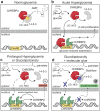
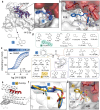
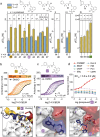
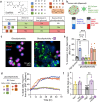
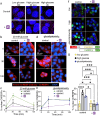
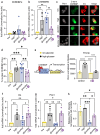
References
-
- Ogurtsova K. et al. IDF diabetes Atlas: Global esmates of undiagnosed diabetes in adults for 2021. Diabetes Res Clin Pract 183, 109118 (2022). - PubMed
-
- Tancredi M. et al. Excess mortality among persons with type 2 diabetes. New England Journal of Medicine 373, 1720–1732 (2015). - PubMed
-
- Chaterjee S., Khun K. & Davies M.J. Type 2 diabetes. The lancet 389, 2239–2251 (2017). - PubMed
-
- Schellenberg E.S., Dryden D.M., Vandermeer B., Ha C. & Korownyk C. Lifestyle intervenons for paents with and at risk for type 2 diabetes: a systemac review and meta-analysis. Annals of internal medicine 159, 543–551 (2013). - PubMed
Publication types
Grants and funding
LinkOut - more resources
Full Text Sources
Miscellaneous
